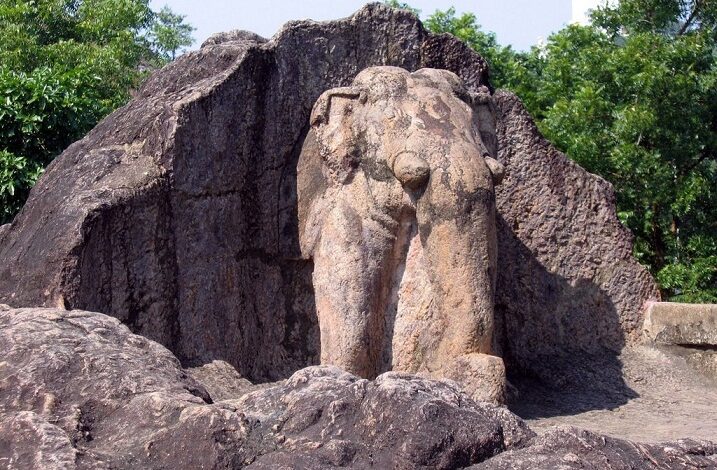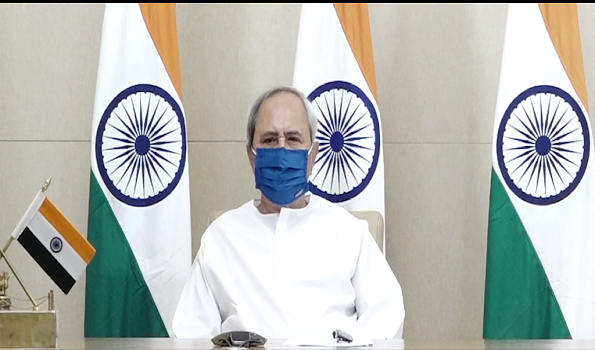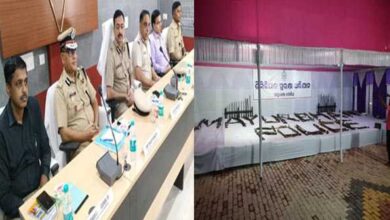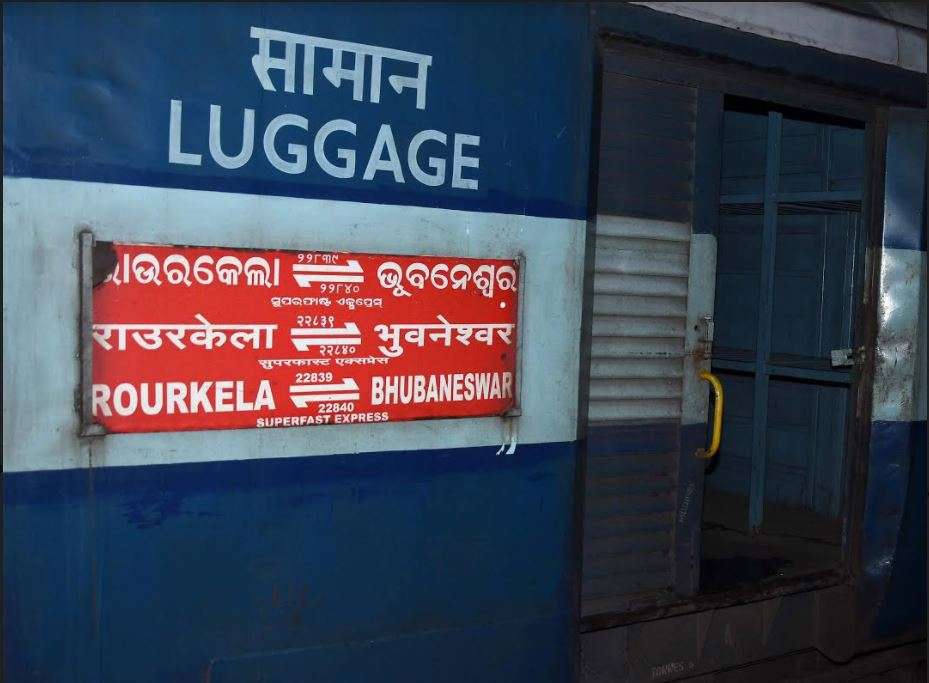Ancient rock cut elephant similar to Dhauli found in Puri

Bhubaneswar, May 16: The Odisha unit of Indian National Trust for Art and Cultural Heritage (INTACT) has stumbled upon an ancient rock sculpted elephant in the Kanas Block of Puri District.
The discovery was made last month by Anil Dhir and Deepak Nayak of INTACH during the exploration of monuments in the Daya River Valley.
The exact find spot, at the far end of the Gada Balabhadrapur village, is near Nirakarpur, 5 km from the Mandakini River Bridge on the New Jagannath Sadak.
The find spot of the ancient elephant is nestled in the flood plains of the Daya and Mandakini Rivers. The sculpted elephant is very similar to the rock cut elephant found at Dhaulagiri, which has been dated by historians to the 3rd Century B.C. (272-231 B.C), one of the oldest known.
The surrounding region where the elephant has been found is rich in Buddhist antiquities, discovered over the last few years.
In fact, the surrounding regions of Gada Balabhadrapur like Delanga, Kanas, Aragada, Naranagada, Tipuri, Sirai Dandapata have yielded many Buddhist antiquities.
Many of the early era temples of the place have enshrined Buddhist images. Earlier, the Intach team has also discovered a Rock Cut Cave with rock art and inscriptions at Naranagada.
The history of Gada Balabhadrapur village is shrouded in antiquity. Being in the floodplains of both the Daya and Mandakini, the village was, and still is, prone to frequent flooding.
It is believed that a Fort ( Gada) was established by the Bhoi rulers of Khurda sometime in the 16th Century CE.
There are many remnants of a fort and it’s moat (Gadakhai) which are evident in this village. The monolithic rock cut elephant figure, the laterite pillar and other ancient stone blocks are all symbols of the Buddhism that once flourished in the region.
A systematic archaeological excavation will yield many more artifacts, Dhir said.
The Gada Balabhadrapur elephant is very similar to the other three monolithic elephants found across Odisha, all of which have been studied and acknowledged to be from early times, he said.
The most notable among these rock elephants is seen at Kaima in Jajpur, which is an exact copy. Even the stone pillar near the elephant at Kaima is replicated at the Gada Balabhadrapur site.
There are other similar pillars which lie underground as reported by the villagers.
The rock elephant at Sitabinji in Keonjhar and the one at Dhauli at the other examples.
According to different Buddhist scriptures and the Jataka Tales, Buddha, in his previous births as Bodhisattva, incarnated in the form of an elephant. The elephant is a prominent emblem of Buddhism.
A five members team of INTACH Odisha Chapter, comprising Amiya Bhushan Tripathy, Sanjib Hota, Deepak Nayak, Biswajit Mohanty and Anil Dhir visited the site recently.
They recorded the oral history of the place by interacting with the villagers and are of the opinion that it is an important archaeological find which needs proper care and protection.
Both the elephant and the stone pillar are presently under an ancient Tamarind tree. If the tree falls down, as can happen due to the frequent cyclones, it will damage them.
INTACH has requested the government to make a proper study of these artifacts and take measures for their proper preservation and conservation.
INTACH State Convener A.B.Tripathy said a proper archaeological survey of the area should be undertaken, as there are many buried artifacts in the flood plain.






